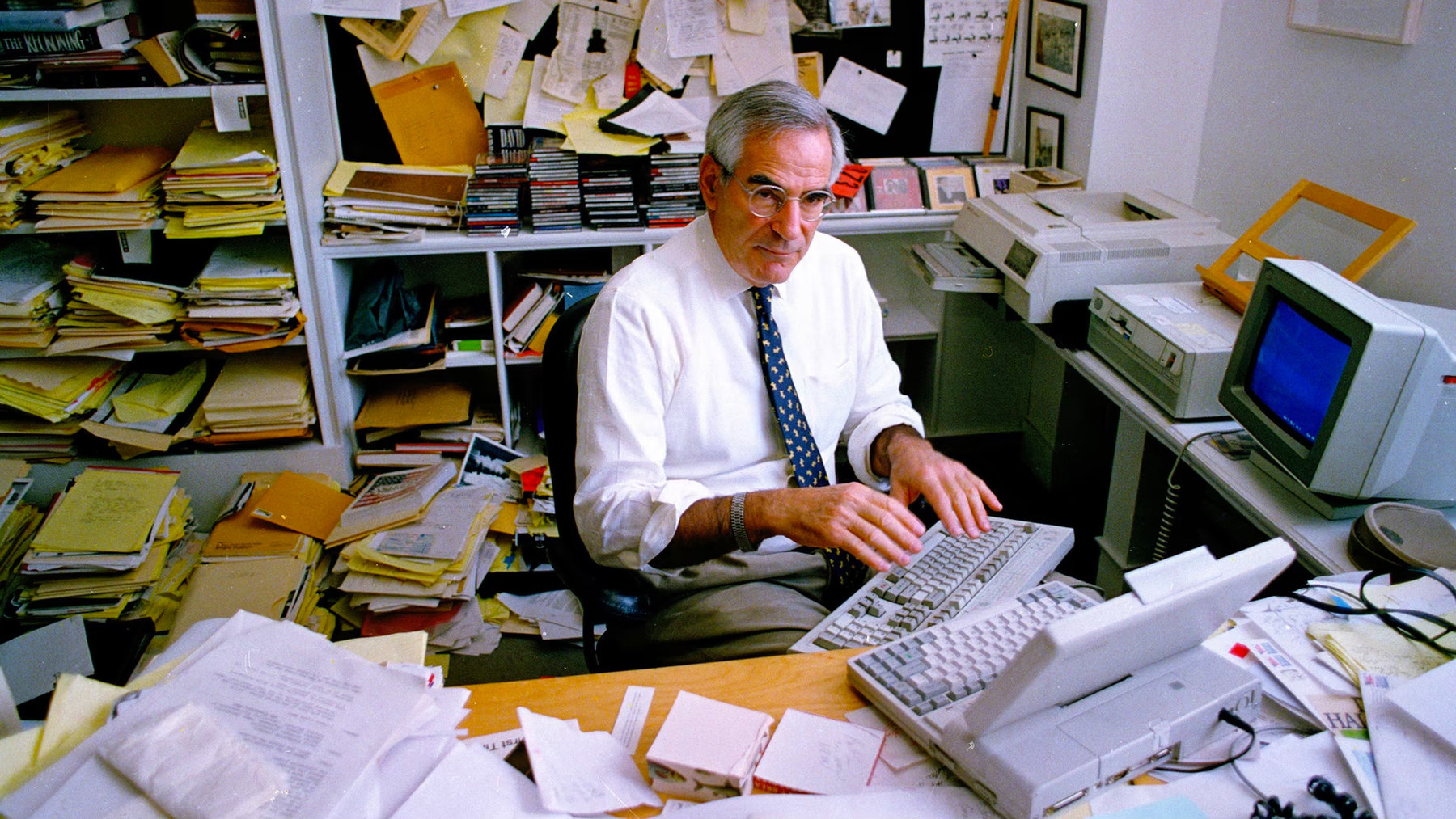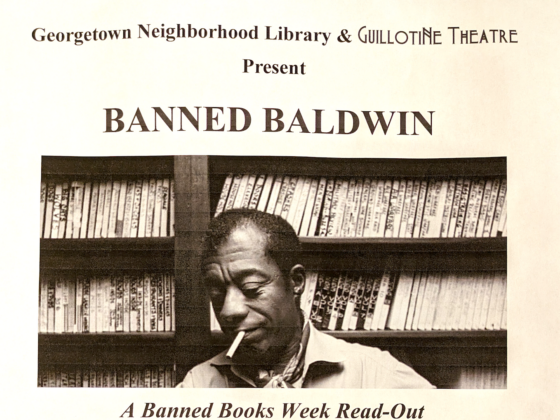In 1981, the writer David Halberstam published a memoir in Esquire magazine, with the headline “Starting Out to be a Famous Reporter.”
At the time Halberstam was well-known enough that the story’s title would have seemed both mildly self-mocking and accurately descriptive. He’d come to national prominence while still in his 20s through skeptical and award-winning New York Times reporting from Vietnam. His book about the making of the Vietnam War catastrophe, The Best and the Brightest, which was published in 1972, was hugely influential and popularized a phrase that has endured nearly 50 years later. (Although I have seen enough recent misuses of the phrase “best and the brightest” to need to point out that Halberstam was using it derisively. It was the impeccably credentialed smart guys around John F. Kennedy, and then Lyndon Johnson, who took the nation to disaster in Vietnam.)
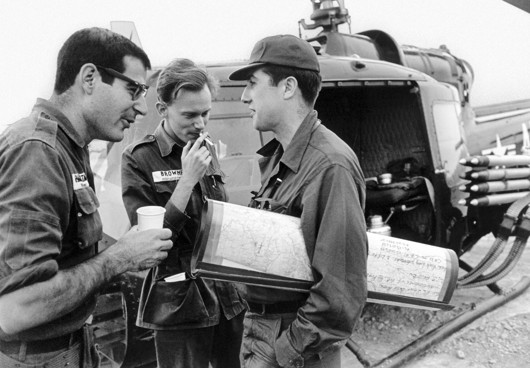
Every few years after that, Halberstam turned out a thick, usually best-selling book. For instance, The Powers That Be, about the rise of the journalistic establishment in the 20th century (parts of which ran in The Atlantic), or The Breaks of the Game, about pro basketball. He kept going at full speed, into his early 70s, until his shocking death in a car crash 12 years ago, while being driven by a graduate student after a university event at UC Berkeley.
David Halberstam had been a model to me, and a generous and forgiving mentor over the years, as I noted when hearing the news of his death. I first met him in the late 1960s, when I was editor in chief of the college newspaper and a group of conservative alums were trying to wrest control of the paper from our “irresponsible” student hands. Halberstam and the late J. Antony Lukas led an alumni counter-movement that held them off. As I noted many decades later, when Halberstam died:
He had his excesses—he was strapping and big, “an honest six-three” I think he wrote in one of his books about sports—and with his deep, dramatic, sometimes self-dramatizing voice he could look and sound like a clean-shaven Old Testament God. He was aware of and liked the effect, I think.
But he had a very, very big heart, and with The Best and the Brightest he changed our business. I still remember the day when, as a graduate student in England, I got my sea-mail copy of Harper’s with Halberstam’s long story “The Programming of Robert McNamara” on the cover. I read it all, standing at the mail box, and I thought: This is what journalism is for. (I also thought: Aren’t magazines great! And: I belong back in America.)
One of the tales I’d heard from David Halberstam over the years was about his very first reporting job out of college. This was the one he described in his 1981 Esquire piece: as 21-year-old cub reporter for the smallest daily in Mississippi, the Daily Times Leader of West Point.
Why this tiny paper? Halberstam says in the piece that as soon as he graduated he planned to go to Jackson, Mississippi, and work with a civil-rights minded editor named Tom Karsell, at a paper there. The two had met in Halberstam’s last year in college, when Karsell was a Nieman Fellow at Harvard and Halberstam was managing editor of the student paper, the Crimson. But by the time Halberstam got to Mississippi, Karsell couldn’t offer him a job. What next?
On the fourth day, as humiliating visions of returning to Cambridge in the old Chevy mounted, Karsell called. There was an opening on the paper in West Point, the Daily Times Leader. West Point was a small town, and the paper’s circulation was around 4,000. I would be the one reporter on the staff. He gave me the name of the Times Leader’s editor, a man named Henry Harris, and his phone number; Harris was expecting my call.
… I was terrified by the idea of going to a small town in a state like this, where I knew no one. I thought for a long time of how alien it would be; then I remembered how I had told all my friends I was going to spend the year working for a small paper in the South, and this, God knew, whatever else, was a small paper in the South.
He also recorded his encounter with his new management, specifically Beulah Harris, co-founder of the paper and mother of the then-editor:
She often came in on Saturday afternoon to look around, to make sure that everything was in order, and, if nothing else, to wash the floors of the newsroom … She was a small, heavily powdered woman; she was fearfully hardworking and equally devoted to her Baptist faith. “You’re David, aren’t you?” she asked.
I said I was.
“I don’t think I’m ever going to learn your last name,” she announced.
I said that was all right.
Then she smiled and said, “The Lord Jesus Christ sent you here.” I, descendant of many centuries of illustrious rabbis, a line only recently broken by two or three generations of American renegades, looked at her in stunned surprise. “Of course He did,” she said. “Why else would you be here?” I could not argue, and with that, we became friends.
I never visited West Point while David Halberstam was alive, but over the past five years I have been there many times. Mainly this has been to write about business changes in the city and the surrounding “Golden Triangle” area of Mississippi, which also includes Columbus and Starkville. The big modern blow to West Point happened a dozen years ago, when the city’s dominant employer, a major meat-packing plant run by Sara Lee, closed for good. This removed 1,200 jobs from a city whose population was roughly 12,000. The big modern hope has been the arrival of Yokohama Tire, whose decision to come to West Point I wrote about here, and whose subsequent news I’ll discuss another time.
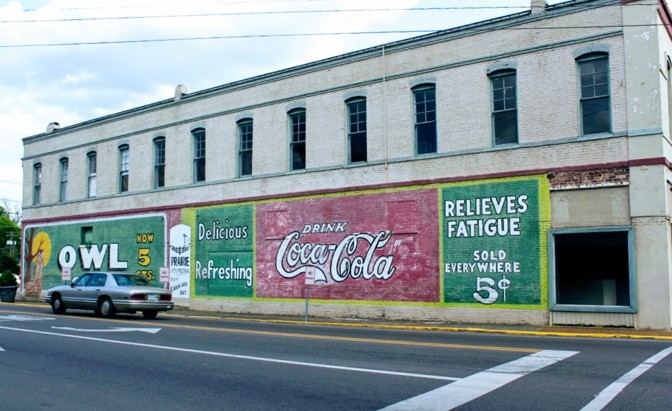
But recently Deb and I were back again, and while walking through downtown West Point I did a double-take when I saw the office of … The Daily Times Leader! It was in a different, smaller location from the one Halberstam had described in his memoir. But I thought: I have to go inside and ask.
What I planned to ask was whether this particular journalist had left any mark on the city or the newspaper, comparable to the mark he said the place had left on him. Very few reporters leave much of a mark anyplace. But maybe it would be different for an alum who had become so prominent? After all, in San Bernardino, California, I’d seen a wall-of-fame honoring the local boy who had grown up to become composer of the Flintstones song. (He was Hoyt Curtin.) Maybe the author of The Best and the Brightest and The Fifties would qualify, for the little paper where he got his start?
The young woman in charge of the Daily Times Leader office didn’t recognize Halberstam’s name. (In fairness, her grandparents had probably not yet been born when he was working there.) But she immediately invited me back into the bound-volumes room, and said I could look through newspapers of that era. She opened a closet door, I stepped in, and I entered a surreal transport-through-time.
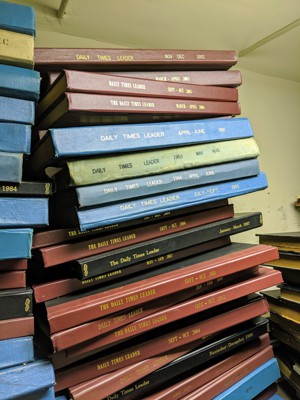
I started out looking for David Halberstam’s byline, in papers from 1955 and 1956. I quickly realized I wasn’t likely to find it, since none of the stories had bylines. I didn’t even find a masthead listing the paper’s staff.
Later on I learned why: According to this piece in the Columbia Journalism Review, by William Browning, the DailyTimes Leader‘s editor of that era believed in giving a byline for a reporter’s first story in the paper, but not after that. You didn’t want to foster a cult-of-personality among the writers. According to Browning, Halberstam’s first and only byline was about a sudden cricket infestation in town, and I didn’t happen to see that one.
I also had an instant immersion in how different small-town papers were in those days. Cable news didn’t exist; evening news programs on network TV were only 15 minutes long; and “national” papers like like The New York Times or The Wall Street Journal had practically no presence beyond the East Coast.
So the front pages of this tiny regional paper were full of world and national news—for instance, speculation on whether then-President Dwight Eisenhower would recover well enough from a heart attack to seek a second term.

Through these same front pages, there were also signs of the strains that apparently cut short Halberstam’s time at the paper. The Daily Times Leader, in Halberstam’s telling, was a paper that didn’t want to be distracted or disrupted by a concentration on the civil rights struggles then nascent in the South. The Emmett Till murder trial was then underway in Tallahatchie County, 100 miles to the northwest. Halberstam wrote in Esquire:
I was aware in some primal way that something important was happening over in Tallahatchie County, that Mississippi, which did not seem joined politically to the rest of the nation, was now being joined to it journalistically.
So I subscribed to all the papers that sent staff reporters to cover the case, hoping to do a piece on their coverage for The Reporter. Twice on weekends I drove over to look at the scene and watch the reporters at work, mighty gods of the East descended upon this miserable little stretch of swampland.
Note the “miserable little stretch,” for later reference. Here is how the Daily Times Leader covered the Till trial while it was underway:
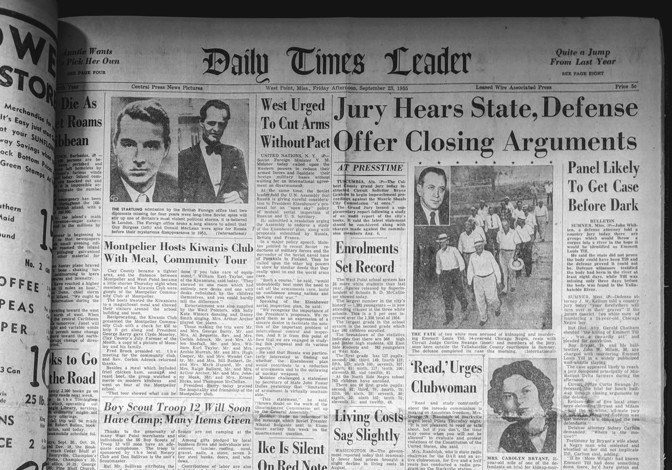
And how it handled one sheriff’s claim during the trial:
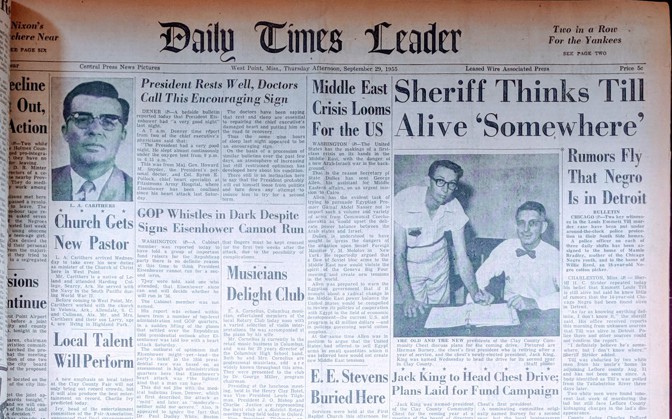
It’s a very different time now, for Mississippi (as we have reported) and for the Daily Times Leader. Here is the front page during our visit last week. Among the differences: All the stories are local. Not only do they have bylines, but they’re all from the same person, Steve Rogers. And the main display photo at the bottom is of the Little Miss Clay County pageant, whose contestants are black.
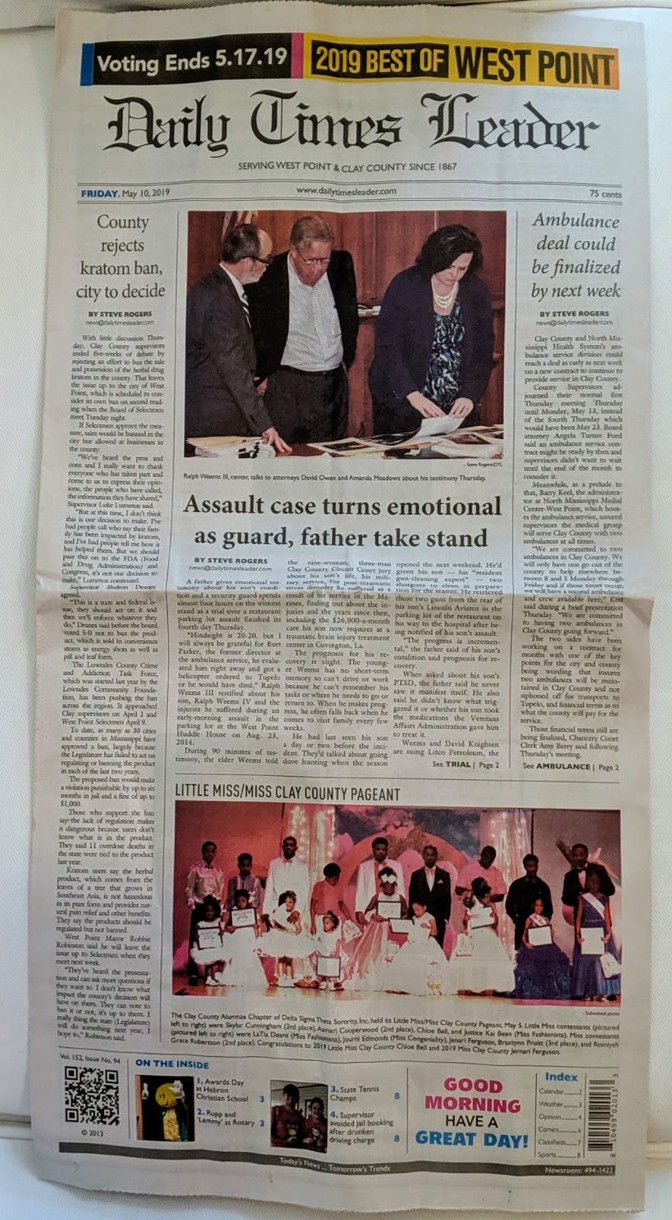
Steve Rogers was out covering a story during our visit, and I called him later to ask about the current situation—and David Halberstam’s time there. “I asked some people in their 80s, and they said, Yeah, maybe they remembered someone who had gone on to the Tennessean,” he told me. “It’s been a long time.”
Rogers grew up in Alabama; went off to college at Yale; worked in politics and media across the country for decades; and has now returned to write most of what is in the Daily Times Leader.
I asked him how the Daily Times Leader itself should be considered. Could it be thought of as a (relative) success, as I argued that the family-owned Commercial Dispatch in nearby Columbus, Mississippi, is—for now?
“We’ve got 4,000 subscribers,” he said—the same number as during David Halberstam’s time. “That’s a lot in a county of 20,000 people. It’s still the smallest daily in the state. But a community this size, continuing to support a paper of this size—that’s something.” For the record, the Daily Times Leader, which has had its share of dramas, has a sister publication in nearby (and larger, and growing) Starkville, Mississippi, and is part of the Horizon group of publications, based in Illinois, which has had dramas of its own. Rogers said, “With the competing options out there, I think the paper has done very well.”
Decades ago, David Halberstam talked about the “miserable little stretch” of Mississippi in which he observed the Emmett Till trial in 1955.
Fifty years after that trial, when giving a commencement address at the University of Mississippi (as reported by Jon Friedman in the Columbia Journalism Review), here is how he described his time in the state:
What is important is that I did not learn the things I expected to learn, the things I thought I was going to be paid to learn—I learned instead other, more enduring things that have lasted me the rest of my life ….
I learned that people from other parts of the country are not any more stereotypical than I was, that human complexity always confounded you, and that the most dangerous thing in the world is to underestimate the intelligence and decency of other people. And finally, perhaps most important of all, I learned about the nobility of ordinary people.
David Halberstam spoke those words at age 71, not 21 as he had been in his Daily Times Leader days. He had continued to learn, and question, and reconsider through those 50 years—another useful example, in these times.

